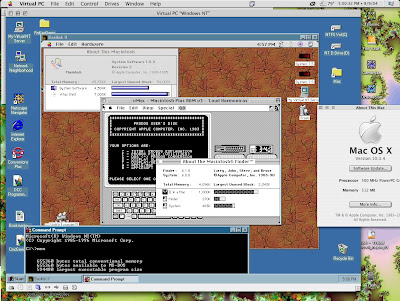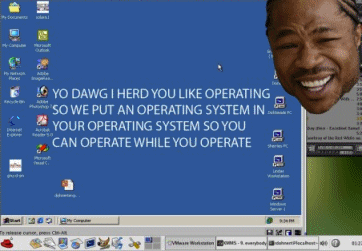As most software and creative professionals know, coffee is an important technology for boosting mental acuity and maintaining peak on-the-job performance (read: minimum necessary sanity). But did you also know that coffee can be a damn tasty beverage? It’s true. All you need is the appropriate amount of disrespect for the mainstream coffee industry and a desire to enjoy a better beverage. So read on, and learn the secrets to great coffee.
First things first. Mainstream coffee sucks, and specialty coffee mostly sucks. Mainstream coffee is primarily stale, low-quality, high-yield beans, many times cheap robustas, foisted on a largely unknowing public in supermarkets nationwide. Specialty coffee isn’t so much coffee as it is flavorings, sweeteners, and milk; what coffee is sold is often neither “special” nor properly prepared – it’s usually over-roasted to serve as a background for sweet flavorings. A few specialty coffee purveyors, however, do sell good coffee, and I’ll show you how to find them, but most are happy to sell you stale beans whose dead taste is hidden behind raspberry and caramel syrups. Buyer beware.
Nevertheless, good coffee is good – great even – all by itself. It’s also dirt cheap and easy to make. Therefore, don’t settle for a cup of crappy coffee: make a cup of the good stuff for yourself.
The coffee quick course
If you follow these three guidelines and do nothing more, you will enjoy coffee better than you can find in most specialty coffee shops:
- Buy only whole-bean coffee roasted within the last few days.
- Grind it fresh, just before brewing.
- Brew it in a French press or a pour-over filter using fresh water, off the boil.
The first two guidelines strike at the nemesis of good coffee – staleness. Stale coffee is dead coffee. There is no way to get a good cup from it.
Sadly, most of the coffee you buy in stores is stale before you get it home. While green (un-roasted) coffee beans can stay fresh for 2 years, roasted coffee goes stale in under 2 weeks, and ground coffee goes stale in a few short hours because of the immense surface area that grinding exposes to the air. Special “freshness preserving” packaging doesn’t help much either; it’s mainly a marketing gimmick.
The only reliable way to get fresh coffee is to know when it was roasted. Therefore, when you buy coffee, buy it from a purveyor who can tell you when it was roasted. If a coffee purveyor can’t or won’t tell you when their coffees were roasted, find another purveyor. And when you buy your coffee, buy it whole bean. Store it away from heat and light (but not in the refrigerator). Use it before it goes stale. If it goes stale, throw it away and get fresh beans.
Also, get a grinder. An inexpensive ($15) blade grinder (“whirly-bird”) is sufficient for making drip coffee and lets you grind just before brewing, which is the key to avoiding staleness. At this price, there is no reason to suffer stale, pre-ground coffee. If you want to buy a better grinder, that’s fine, but don’t think you have to spend a lot of money to enjoy fresh coffee.
The third guideline addresses another common flavor-denial attack: Low-temperature brewing. Most drip coffee makers brew at a temperature too low for proper flavor extraction. The most frequent explanation that I’ve heard for this sad yet pervasive flaw is that “really hot” coffee is a lawsuit waiting to happen, and thus manufacturers have lowered brewing temperatures accordingly. Whatever the reason, the effect is a cup of lifeless coffee.
So what is the right temperature? Off the boil works well. Put a kettle of freshly drawn, cold water on the stove. When it boils, take it off the heat, wait a minute or so, and slowly pour it over your freshly ground coffee. If you’re an experimenter, a $10 instant-read thermometer is all you need to “dial in” the optimal temperatures for your coffees and your taste-buds.
Since you’ll be using a “pour over” technique, you’ll need a pour-over brewing apparatus – either a French press or a $5 pour-over filter holder, found in most supermarkets. Use the French press if you enjoy the stronger flavors of unfiltered coffee. Use the filter holder if you prefer the convenience of a filter, which makes clean-up easy. Both are small enough to take to work, and the filter holders are cheap enough to leave there.
And that’s how you make great coffee. If you think that’s too much effort, at least you can use your new knowledge to find coffee shops that use fresh beans, grind them just before brewing, and brew them properly (most commercial brewers do use proper temperatures, thank goodness).
Oh, there’s more...
If you follow the advice above, you will drink great coffee for the rest of your life. For some people, that’s enough. For other folks (like me), that’s just the beginning. It’s the first step toward a fun, inexpensive, and gastronomically rewarding hobby. Even if you don’t want to make coffee into your hobby, you do have the opportunity – right now – to give up bad coffee and start drinking the good stuff. Why not seize the day?
Home roasting
Roasting your own coffee is simple and provides three major benefits. First, you can buy your coffee green and store it for over a year. Second, you can roast your coffee as you need it, so you’ll always have fresh beans. Third, you can experiment with a wide variety of beans, blends, and roasts to enjoy coffee that you could never find in a store.
A further benefit is that green coffee is less expensive than roasted coffee. By home roasting you’ll not only have better coffee and more control but also more money in your pocket.
To roast your own coffee you will need two things: green beans and a roaster. The beans can be purchased online at places like Sweet Maria’s (where I get most of my beans) and locally from the better coffee shops in your neighborhood. A roaster can be had for as little as $5 – buy an old hot-air popcorn popper at a garage sale. That’s what many folks on alt.coffee use for their roasting. If you prefer a less adventurous solution, there are many home-use roasting machines now on the market in the $100–$300 price range. I use a $150 Hearthware Precision roaster, and it works well. Just drop in a scoop of beans, dial in the desired roast, and press a button.
Yes, it’s that easy. And, yes, the results are better than most pre-roasted coffees you can buy. Nothing smells as good as freshly roasted beans. Nothing tastes as good when brewed. Once you try home roasting for yourself, you will understand.
Espresso
If you want to experience the concentrated essence of coffee, you must drink espresso. Good espresso. Unfortunately, practically none of the specialty coffee shops and chains in the United States knows how to prepare espresso properly. If you want good espresso, you’ll have to make it yourself (or take a trip to Italy).
Unlike the advice I provided earlier, which is simple and just plain works, making good espresso is difficult. Finding the right combination of beans, grind, packing, pressure, temperature, and exposure takes practice. It took me months of gradual refinement to learn how to make a truly good cup. After years, I’m still seeking the perfect cup.
Since the perfect cup of espresso is a never-ending quest, I can only point you in the right direction. The rest is up to you. Here is what I can tell you:
- Plan on spending > $250 USD on a good pump machine. “Steam toys” aren’t capable of good espresso. Do your homework: Read what people who own the machines say in the consumer reviews of brewing equipment on on CoffeeGeek.com.
- Plan on spending that amount again on a good grinder. Many people buy an expensive espresso machine but skimp on the grinder. Big mistake. Since grind is probably the single most important variable under your control, a grinder must be highly adjustable and produce a consistent grind, and that means high-quality burrs set in a rigid enclosure. These features don’t come cheap. When shopping for a grinder, again, check out the consumer reviews on CoffeeGeek before buying.
- Read the alt.coffee wisdom on espresso, ristretto, crema, and tampers. It’s also a good idea in general to hang out on alt.coffee. I’ve learned most of what I know about coffee and espresso there.
Brew well and drink well, amigos.
Although coffee is commonly considered a utility beverage, it is an amazing drink when well prepared. Given its ubiquity in software and creative circles, it’s likely that you will be drinking a lot of it. So why not prepare it as it was meant to be? Why not enjoy a cup of truly good coffee? If you buy fresh, high-quality beans, grind them on the spot, and brew with hot water, you can’t go wrong. And if you decide to try home roasting or espresso, you will enter a whole new world of flavor and nuance. The rewards are worth the effort.
Whatever else you may do, please don’t let the mainstream coffee industries convince you that bad coffee is all there is. Good coffee is out there. Insist on the good stuff.




